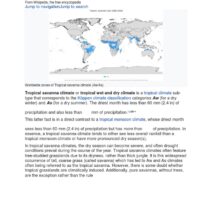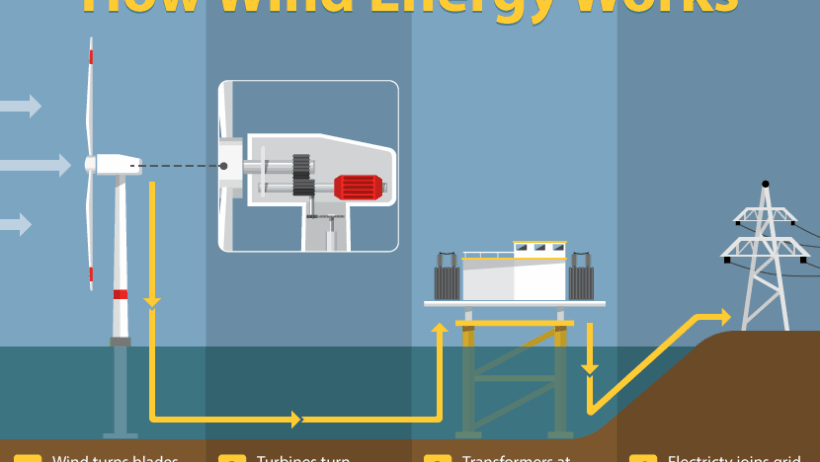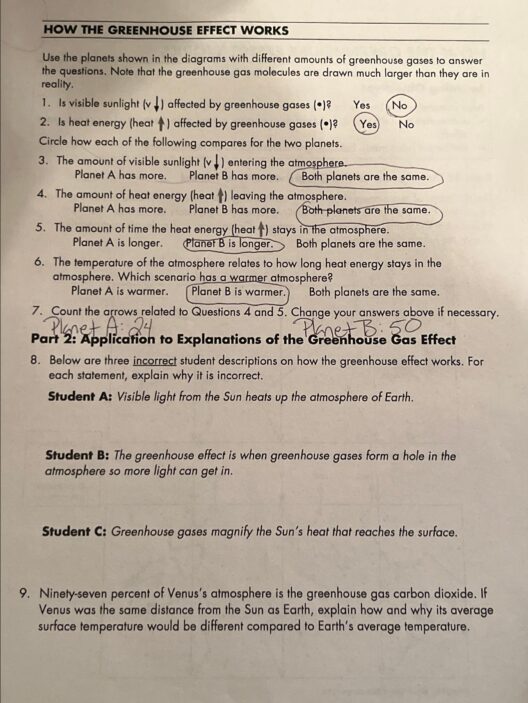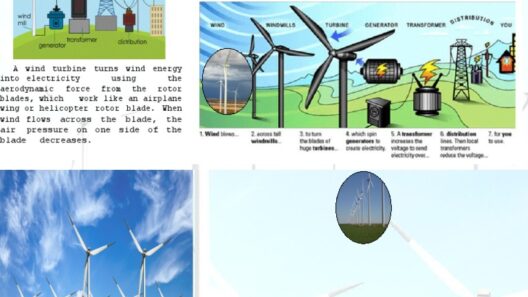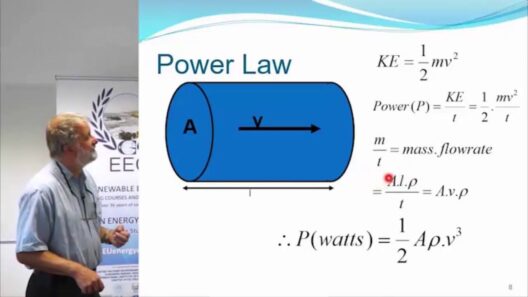The transition towards renewable energy sources is crucial in our fight against climate change. Among these sources, wind energy has emerged as a major player in the quest for sustainable electricity production. Understanding how electricity is generated from wind energy, and the intricate processes that support this, is essential for addressing the concerns of potential investors and stakeholders in renewable energy. This piece elucidates the mechanisms involved in converting kinetic energy from wind into electrical energy.
Wind energy is harnessed using wind turbines, which are typically constructed in large wind farms or arrays. The mechanics of these turbines are fascinating and underline the innovative technologies that enable us to tap into this abundant energy source.
Wind turbines consist of a rotor with blades that catch the wind, a nacelle that houses the turbine’s internal components, and a tower that elevates the rotor to optimal heights for wind capture. As wind passes over the blades, it creates lift, similar to how an airplane wing operates. This lift causes the rotor to spin, converting kinetic energy from the wind into mechanical energy.
Once the rotor begins to spin, this mechanical energy must be transformed into electrical energy. The key to this transformation lies in the drivetrain, which typically comprises a gearbox and generator. Here’s how the process unfolds:
Upon capturing wind energy, the rotors turn a low-speed shaft connected to a gearbox. The gearbox’s primary function is to increase the rotational speed of the shaft, converting the lower-speed mechanical energy into higher-speed energy suitable for generation. In many turbines, a generator works on the principle of electromagnetic induction. As the gearbox spins the generator’s rotor at high speeds, a magnetic field is created, inducing an electric current in the coiled wire of the generator’s stator. This electric current is what ultimately becomes usable electrical power.
While the basic mechanics of wind turbines are relatively straightforward, numerous advancements have been made to improve efficiency and output. Aerodynamic blade designs are being continuously refined to maximize lift while minimizing drag. Materials science has allowed for lighter, stronger blades that can capture more wind energy while enduring harsh weather conditions over extended periods.
In addition to improvements in turbine design, the placement of wind farms is another pivotal factor influencing energy production. Situating turbines in areas with consistent, strong winds, such as coastal regions or open plains, significantly enhances their efficiency. Factors such as terrain, wind patterns, and even seasonal variations are carefully analyzed to ensure optimal energy harnessing.
Moreover, advances in technology have led to the development of offshore wind farms, where turbines are installed in bodies of water. Offshore turbines can harness higher and more consistent wind speeds, translating into greater energy yield compared to their onshore counterparts. This innovation not only opens up new avenues for energy production but also significantly reduces land-use conflicts associated with terrestrial wind farms.
While one may envision vast fields dotted with wind turbines as a hallmark of wind energy generation, it’s important to also consider how this energy is stored and distributed. Wind energy is inherently intermittent; it is not always blowing when demand rises. To address this challenge, modern energy systems incorporate battery storage technologies. These systems store excess energy produced during high-wind periods for later use, ensuring that electricity remains available even when natural conditions are less favorable.
Grid integration is another key concern. As wind farms become more prevalent, the ability to integrate this energy seamlessly into the existing power grid is paramount. Smart grid technologies are evolving to allow for real-time monitoring and optimization of energy distribution, ensuring that wind-generated electricity is effectively routed to where it is needed most, when it is needed.
The impact of wind energy on the environment is another aspect often scrutinized by potential investors and policymakers. Wind energy significantly reduces greenhouse gas emissions when compared to fossil fuel-based energy sources. Moreover, the environmental footprint of wind farms is less invasive when planned strategically. Careful consideration of local ecosystems can mitigate the ecological impacts often associated with construction and operation.
The economics of wind energy generation also warrant discussion, especially for those concerned about return on investment. The initial costs of installing wind turbines can be high, but the ongoing operational costs are relatively low, especially once the installation has been amortized. Furthermore, governments worldwide offer incentives and subsidies to encourage investment in renewable technologies, making the financial landscape even more favorable for stakeholders.
As the global need for sustainable energy solutions intensifies, the significance of wind energy will continue to grow. Education about the process of converting wind into electricity is vital for dispelling myths and rallying support for the expansion of wind energy infrastructure.
The future of wind energy looks promising. Continuous advancements in technology and streamlined processes will enhance efficiency, reliability, and adaptability. Those who invest in this sector are not just capitalizing on a financial opportunity; they are contributing to a more sustainable and eco-friendly future.

